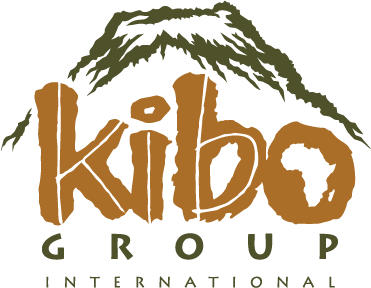Building latrines "speedy speedy," courtesy of Kamya Charles
The most common word for “quick” or “fast” in the villages of Busoga is not native to the region. Most people use a foreign import to describe when processes move quickly — “speedy speedy.” As you might imagine from a culture whose chosen word for “fast” developed as recently as colonization, measurable progress often does not feel “speedy speedy” in our partner villages.
That’s why we were thrilled by the rapid progress of Igerera village, which has increased its latrine coverage by 62 percent in just 4 months. This robust response to our Water, Sanitation, and Hygiene program’s curriculum is partly thanks to the involvement of local law enforcement and partly thanks to the leadership of one conscientious member of the Igerera community: Kamya Charles.
Without the help of community leader Kamya Charles, progress in Igerera village would be a lot slower. The faster a village builds latrines and becomes open-defecation free, the fewer people who die and the faster quality of life improves. By keeping his community accountable to building latrines, Kamya Charles is helping save lives.
Historically, it was common for Kibo’s WASH team to work with a village for 12 to 18 months to bring latrine coverage to 100 percent. The process requires regular check-ins and an arsenal of persuasion techniques. And there’s always that one home that just won’t budge.
These days, Kibo’s WASH staff sees results much faster than it used to. Before the triggering session in August, only 55 of the 164 total homes in Igerera had a latrine. That’s means two-thirds of the homes did not have a latrine. Open defecation was rampant, so we started the formal push to increase latrine coverage in October. However, when we checked back in early January, 156 out of 164 homes had a latrine. That’s 95 percent of all the homes in the village — a difference of roughly 62 percent in just a few months.
This is a top-notch latrine that a family constructed during Christmas break. It was a huge sacrifice of money and time, but it was well-worth the effort!
Some of the eight homes who still don’t have a latrine have already dug their pit but are still building the structure around it. Structures are important for privacy and safety.
What happened? How did 101 homes go through the rigorous process of digging a latrine in so few months — even during the weeks Kibo was on Christmas break? Why did so many families sacrifice to build a latrine during the Christmas season, which is the most financially trying season of the year? What kept them accountable to meet their goals?
Two reasons stand above the rest: local leadership and help from government officials.
LOCAL LEADERSHIP
Meet Kamya Charles. Charles is the “LC1,” a local government official who lives in the village. He has been instrumental in mobilizing his community and keeping its members accountable. Kibo will often send him on assignment to collect data or funds for Igerera’s sanitation committee. His notepad is filled with useful information that helps Kibo do its job better and faster.
When local leaders are able to answer every question about every home in the community, we know they are doing an exceptional job!
Our WASH staff laid the groundwork. They convinced the village of the importance of hygiene and sanitation, and they empowered leaders on the ground to keep the community accountable to the goals they set for themselves. Charles quickly became one of those leaders who galvanized his neighbors to make Igerera a healthier place.
In short, the village succeeded because they were convinced that they needed to change — “speedy speedy.”
Local leadership takes time to develop. It requires Kibo to invest in the minds of community members. But once it takes root, development becomes an organic process rather than a foreign import. If a community rallies around the problem of open defecation, and if leaders are passionate about improving their communities for their children, the entire community transforms.
GOVERNMENT OFFICIALS
Without a local body of accountability, progress is easily reversible. Kibo won’t be in Igerera forever. So how can we ensure that change is sustainable? By recruiting a body of accountability that won’t go away anytime soon.
Locals in the village of Busoga have a complicated relationship with law enforcement. They rarely see police officers, for instance, unless they are coming to arrest loved ones. Like in many poorer communities around the world, police violence is a factor.
What Kibo does is instill in the community that police can be an asset by providing a positive interaction with local police.
Since Kibo started recruiting the help of government officials, the time required for a village to reach 100 percent latrine coverage has been cut in half.
Between local leadership and local police involvement, a pattern emerges: “local.” Development is more sustainable and more efficient when people on the ground understand the benefits and are empowered to enact change.
The transformation of Igerera village has effects beyond its borders. Our staff reports that homes in the surrounding areas — mothers and fathers who have borne witness to the success story in Igerera — are already clamoring to construct their own latrines. Thanks to Kamya Charles and others in the community, this is only the beginning of development.





